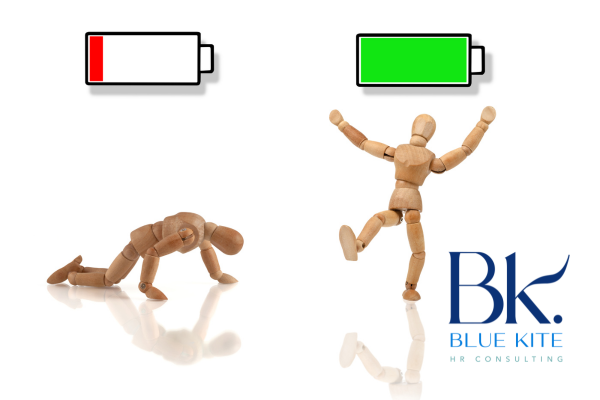Zoom Fatigue: how Video Calls are draining Mental Health
The camera’s always on – but should we be?
Zoom fatigue is real, and it is hurting mental health. Learn why video calls drain us, and how to build healthier meeting habits at work.
The Rise and Toll of endless Video Calls
It’s 9:00 am. You’ve just sat down at your workspace with a steaming mug of coffee, hoping for a slow start to the day. You log in to your emails, catch a glimpse at your calendar and realise it’s another day of ‘not meant to be’. It’s now 9:08 am and you’re already logging into your first video call of many. By the time you log off for the day, you’re more exhausted than if you’d run a marathon.
And then you realise you have been in a marathon – a call marathon! You’ve spent your day toggling between Zoom, Teams, Google Meet. You’ve been greeting, smiling, nodding, adjusting your hair, muting, unmuting… Even the moments in between calls have been filled with the pings of notifications.
And there you are, at the end of the day, making lists of tasks to complete and checking on what you have lined up for the next day. You’re mentally drained, emotionally disconnected, and increasingly stressed.
Sound familiar?
This all-too-familiar exhaustion comes not from demanding tasks, but because the medium through which you performed them was so relentlessly demanding. If you don’t already know, this modern malaise that many remote and hybrid workers silently ensure is known as Zoom fatigue.
Before the COVID-19 pandemic, video calls were usually a novelty – a way for colleagues across locations to catch up and collaborate in a personal, visual way. A scheduled video call sparked excitement and genuine connection, often reserved for special projects, strategic sessions, or long-distance reunions.
However, as the world shifted to working from home, a helpful tool transformed into a necessity. E-meetings became the new norm, almost as indispensable as meals. For companies embracing remote or hybrid models, Zoom and other video conferencing platforms worked to their advantage. Not just for collaboration, but also for tracking progress, assigning tasks and maintaining constant connectivity. They’ve gone from being occasional windows into distant offices to becoming the primary architecture of the workday, a change that has quietly reshaped how we experience work and how we feel about it.
This blog explores the evolution of video meetings – from novel innovation to necessity – and what happens when their overuse starts to chip away at our mental health. We’ll briefly examine the science behind video call fatigue, the subtle symptoms many overlook, and most importantly, the strategies that employees, managers, and organisations can adopt to rebuild a healthier, more human virtual workplace.
Because connection should energise us – not leave us running on empty.
So, what exactly is Zoom Fatigue – And Why Does it Happen?
At first, it seems harmless, routine – another meeting, another grid of faces. But after your fourth call of the day, your brain starts to buzz, your attention wavers, you zone out… Let’s face it, most of us are physically present albeit with eyes glazed, but mentally we’re at a beach somewhere! And all this has a name: Zoom fatigue.
Coined during the height of the pandemic, Zoom fatigue is the unique exhaustion that comes from prolonged and continuous use of video conferencing tools. Unlike phone calls or in-person meetings, video calls need continuous partial attention – forcing our brains to process multiple layers of information at once.
Think about it. We’re trying to decode tone, facial expressions, chat messages, screen shares and body language. All of this while trying to manage how we ourselves appear on screen. And this sometimes goes on for hours. That’s a cognitive load we weren’t built to carry!
According to research from Stanford University’s Virtual Human Interaction Lab, four key factors make video calls especially draining:
1. Too much eye contact
During video calls, we feel like we’re constantly under the scanner. In real life, the kind of sustained eye contact we have while on video calls would be unnatural and intense. In normal meetings, our gazes shift naturally. But in video calls everyone tends to look at everyone else all the time. This feeling of constantly being watched can be stressful and is similar to the anxiety of public speaking.
2. Seeing yourself constantly
Imagine using the time you spend in e-meetings to stare at yourself in the mirror. Daunting, right? This constant self-view is unnatural and can lead to self-criticism, negative emotions and increased stress. Research suggests that constantly seeing your reflection up close makes you more critical of yourself.
3. Limited movement
In face-to-face meetings, people naturally move around and use gestures and body language to express themselves. All this helps with cognitive processing. However, in video meetings, we’re usually trying to be heard clearly and so we lean forward or sit stiffly, focussing more on getting our message across. This enforced stillness of video calls can affect cognitive processing and contribute to mental fatigue.
4. Higher cognitive load
Effective communication relies on both verbal and non-verbal cues. In video calls, we have to work hard to send and receive non-verbal cues. We’ve all dealt with lag, poor lighting, blurry backgrounds etc. But what you may not understand is that our brains work overtime to fill in the gaps during these hindrances and we’re putting in a lot more mental effort.
When calls are then stacked without breaks or enough adequate breaks, we may feel like we’re being productive, but our mental energy is being depleted behind the scenes.
The Mental Health Consequnces of Constant Video Meetings
And so, you carry on day after day – smiling, nodding, adjusting your camera, trying to stay focussed. But once the laptop snaps shut, the silence feels heavier than it should. You’re exhausted in a way that sleep doesn’t fix. Your brain is overburdened, your patience is thin, and even simple tasks feel impossible.
This isn’t just fatigue – it’s a form of emotional depletion that comes from the overuse of video meetings.
While video calls were meant to bring us closer, too many of them can actually make us feel more disconnected, anxious or invisible. Here’s how:
- Executive function depletion: Video calls require a high degree of focus, memory recall and social processing. The constant pressure to stay ‘camera-ready’ depletes the mental energy that’s needed for critical functions like problem-solving and creativity.
- Social performance pressure: Knowing you’re constantly visible, often in a grid of faces, can create a subtle pressure to perform. Even when you’re exhausted or emotionally off-balance, the expectation to appear engaged and “on” persists.
- Reduced recovery time: Unlike in-person meetings that are broken up by hallway chats or physical movement between rooms, video calls are often scheduled back-to-back. Without natural transitions, your brain lacks the recovery time it needs to process information and reset – leading to accumulated stress and decision fatigue.
- Emotional exhaustion without connection: Being in constant interaction doesn’t necessarily mean you feel connected. In fact, video meetings often limit informal moments of connection – like side conversations, laughter, or shared pauses – that normally recharge us. This can result in emotional withdrawal, irritability, and a sense of disconnection despite frequent interaction.
- Reduced psychological safety: When employees feel they must always be available and emotionally composed for video calls, it can lead to self-censorship and guarded participation. Over time, this erodes psychological safety – making people less likely to speak up, admit uncertainty, or ask for help during meetings.
- Isolation masked by interaction: Frequent video calls can create an illusion of connection while still leaving employees feeling unseen or unsupported, particularly for remote and hybrid workers.
Unaddressed, these dynamics can quietly deteriorate employee wellbeing, productivity, and team cohesion and turn intended collaboration into a source of chronic stress.
Signs You’re Experiencing Digital Fatigue (But Didn’t Realise It)
Zoom fatigue isn’t always obvious. It doesn’t show up with sirens and flashing lights. More likely than not, it creeps in quietly. You’d be forgiven for mistaking it for procrastination, mood swings, or just feeling ‘off’.
Here are some signs that you could be dealing with digital fatigue:
Emotional and Cognitive Signs:
- Increased irritability or emotional flatness after meetings
- Heightened self-awareness or anxiety around being seen
- Difficulty concentrating or retaining information
- Feeling mentally foggy after video calls
Behavioural Signs:
- Turning off notifications… and not turning them back on
- Camera avoidance or frequent screen-off behaviour
- Withdrawing from casual team chats or check-ins
- Resisting meetings, you’d usually attend
Physical signs
- Feeling wired but tired – unable to shut your mind off
- Difficulty falling asleep or relaxing after work
- Tension in the neck, shoulders, or jaw
- Eye strain or headaches by afternoon
If you’ve found yourself nodding along, don’t worry, there’s nothing wrong with you. It means your brain needs more space, more downtime, and more human-centred work rhythms. The solution isn’t to push harder – it’s to create more intentional boundaries and recovery times.
Attention Employees! Here’s What You Can Control
Smart ways to reduce your own Zoom fatigue
While you may not be able to rewrite your company’s meeting culture overnight there’s no reason why you can’t make some changes and regain some control. These strategies don’t require permission, they just need intention.
1. Go camera-off when you can
Unless face time is essential, turn off your camera and let yourself focus on the conversation. Not on your reflection.
2. Protect your time blocks
As much as possible, schedule your meetings in the morning or post-lunch. This will allow you to have stretches of non-(call)-interrupted deep work.
3. Not everything needs to be a meeting
Use written or flexible updates when a meeting isn’t necessary. A short voice message, email or team post can often save everyone time without losing clarity.
4. Build micro-recovery into your day
Add 5 – 10 minutes between calls for breathing, a drink of water, movement or silence. Don’t jump from screen to screen – disconnect to recharge.
5. Change your visual environment
Shift your set-up. Move closer to a window. Stand. Sit. Use different backgrounds. Even small changes can work wonders on your energy.
6. Speak up about an overloaded meeting schedule
It’s ok to say: “I’m feeling Zoomed out – could we share updates another way?” Normalising starts with someone. Why not you?
Remember: you don’t need to attend everything, be on camera all day, or “prove” your presence through pixels. You need boundaries to sustain focus, wellbeing and emotional clarity. Boundaries are not disconnection—they’re care.
How Managers and Teams Can Work to Change the Culture
It’s going to take a village to reshape meeting culture. While an individual cannot influence office protocol by themselves, team leads and managers are uniquely positioned to influence organisational policies. They can use their positions and influence to set expectations and shift norms.
Here are some practical ways to build healthier relationships with video calls:
1. Make camera-optional the default
Unless absolutely necessary, let team members choose when they want to be on screen. Giving people the option to turn off video can lower stress and help them stay more present.
2. Rethink your recurring meetings
Regular catchups can soon pile up. Run a meeting audit. Once a quarter, review your team’s recurring meetings. Analyse, ask: Do we need this meeting? Does everyone need to attend? Can updates be shared another way?
3. Create space for non-meeting communication
Encourage updates via shared docs, team posts, or short recorded messages for non-urgent topics. This supports inclusivity and focus.
4. Focus on outcomes, not appearances
We’re all aware that productivity isn’t determined by who talks the most on calls. Track progress through goals and deliverables – not attendance in every meeting.
5. Normalise talking about bandwidth and energy
A simple “How’s everyone’s energy today?” at the start of a meeting can open the door for honest check-ins and build team trust.
6. Model the behaviour you want to see
When leaders turn off their cameras, block focus time, or cancel non-essential meetings, it becomes clear to the team that they work in a culture where rest and boundaries are respected.
All the steps listed bring about small changes. But done consistently they can influence big changes in culture. When employees see an active concern and respect for their bandwidth and mental health and wellbeing, they reciprocate with trust. And trust fuels better work.
Less Face Time, More Focus – Redefining Prouctivity for the Modern Workplace
Traditionally, at work, productivity was often tied to visibility.
In the office, that meant being seen: arriving early, staying late, even eating lunch at your desk. In remote settings, the principle seems to have stayed the same – only the ways of measuring visibility have changed. It’s now measured by your attendance at every Zoom call, staying ‘green’ on Slack, and how often your camera is on.
But, does visibility actually equal value?
Let’s be honest, productivity has never been about being constantly present – it’s about doing meaningful, sustainable work.
| This shows up as | Not just |
| Delivering results | Attending online meetings |
| Offering solutions to problems | Reacting to everything in real-time |
| Creating space for deep work, reflection and recovery | Being busy from 9 to 5 with no breaks |
| Ending the day with energy | A filled calendar |
Too often, the pressure to be ‘always on’ comes at the expense of strategic thinking, creativity, problem-solving and wellbeing. In the long run, it doesn’t serve anyone – especially not the team.
While it could take some time to make a complete shift, it’s time for companies to normalise a healthier culture.
Think about:
| Rewarding | Over |
| Focus | Face time |
| Outcomes | Optics |
| Boundaries | Burnout |
This is not about only protecting mental health, it leans towards encouraging and supporting better, more human performance.
And the change has to be top-down. When leaders give permission to work smarter – not just louder, teams can finally stop managing appearances and start doing their best work.
One Shift at a Time
Video meetings aren’t going away – and they shouldn’t. Used well, they can build connection, alignment and trust.
But overused? They drain our focus, increase stress, and chip away at our energy.
Zoom fatigue is real – but is also reversible.
Easy does it, and small, intentional choices will create big changes.
- Audit your meeting schedules
- Turn off your camera when you need to reset
- Replace non-essential live calls with written updates
- Check-ins must include the team’s energy, not just outputs
Because when we create space to breathe, we also create space to think, connect, and do better work.










